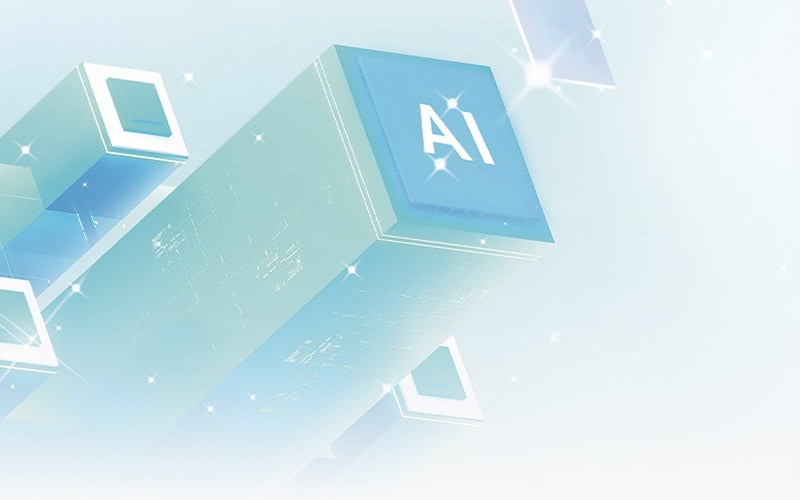Use Cases
5 Key Enablers of Smart Banking
How financial companies can move forward in today's digital world.


By Cao Chong, President of Global Financial Services Business Department, Huawei Enterprise BG
A new era for finance
During the pandemic, banks with leading digital capabilities could continue offering digital and contactless services for customers, out-performing less digitally mature banks in risk resilience and the ability to deliver both normal and tailored services to customers.

The digital transformation of financial enterprises starts with digital channels, such as mobile banking, and gradually extends to the company-wide digitalization of employee working models, branch resource management, data management methods, and risk control strategies.
The requirements of digital transformation
Redesigning the customer service journey: Although online banking has become more widespread, customers still need to visit their local bank branch for certain financial services. With branches closed during the pandemic, banks have begun to focus on redesigning their customer service journey with mobile banking.
Fintech can be used to make more services available online and reconstruct existing services around customers' online and mobile habits. Online appointments and pre-filled forms can be seamlessly integrated with offline processes such as QR codes, one-click interconnection services, and cross-selling, which makes the in-branch customer service journey more organized, efficient, and reassuring.
Business agility and mobility: 5G, AI, cloud, and the Internet have shifted customer behavior towards mobile, personalized, and cashless and cardless services. Leading banks worldwide have adopted mobile-first strategies that increase service agility and better meet customer requirements. We predict that the main competitive arena for banks in the future will be mobile apps and digital customer acquisition, services, and operations.
A mobile-first strategy, however, requires full-service partners to transform all banking processes with advanced IT capabilities and collaboration platforms.
Smart branches: Technologies like 5G, Wi-Fi 6, and IoT combined with devices such as AI-powered smart cameras and smart terminal machines (STM) will make bank branch operations lightweight and intelligent. Smart tellers can guide customer interactions and services, while smart temperature control, cameras, and smart experiences can make branches safer and more comfortable and boost management and operational efficiency. Regional hubs will be able to optimize branch distribution and resource allocation.
Digital payments: Internet giants have made mobile payments a must-have service in the online ecosystem. Research by IDC reveals that mobile payments increased by 60 percent in some Asia-Pacific markets in the first quarter of 2020. Banks are facing the challenge of how to support mobile payments, make them more convenient, integrate them with banking services, and open up capabilities to more Internet players.
Digital customer acquisition and digital operations: The Internet is now a key channel for banks to acquire customers. Financial institutions need to develop online customer acquisition capabilities alongside big data, AI, and fintech (such as eKYC - electronic Know Your Customer) to better understand customers, mitigate risks, and improve the precision of customer services.
Customer communication: Internet companies can easily communicate with customers, send personalized notifications, and quickly respond to customer needs 24/7 using their own platforms. Replicating this poses a big challenge for banks' siloed multi-channel service approach. They need interactive platforms that enable direct communication with customers, push services in real time, and respond to customers any time.
Cloud architecture: Hybrid cloud is the foundation of bank digital transformation. It’s scalable, improves resource utilization, and provides on-demand microservices and development tools. And banks can quickly launch and iterate new services and products online.
The 5G+ trend: 5G and IoT can connect mass devices, with 5G's high bandwidth allowing customers to use video, VR, and AR to interact with banks. 5G's low latency and high reliability will enable banks to migrate more services online and seamlessly connect with billions of consumers and enterprise customers.
Edge computing and AI can bring personalized service capabilities closer to customers by, for example, automatically identifying customers in service centers and understanding their needs.
5G+ will make virtual lending services, investment, and wealth management services available on smart devices. The loan process for companies will be simpler and more transparent, with technologies like big data analytics able to analyze business performance. Overall, services will cost less to implement as they become flatter with fewer steps.
Empowering digitalization
Over several decades, Huawei has served over 1,600 financial customers in more than 60 countries, including 45 of the world's top 100 banks. Huawei believes that the financial services industry must focus on three things:
Connectivity: Without fast, reliable, and high-quality network connections, mobile devices can't provide rich interactive experiences, financial services can't rapidly respond to every customer, and business models will stagnate.
Digitalization: Ubiquitous connectivity allows all services to be digitalized and offered online, so that financial companies can shift away from traditional models to online digital service models.
Business agility: COVID-19 has shown that financial companies must be able to respond quickly to uncertainty and use digital technologies to adjust business models, resource capabilities, and risk control measures.
The ABCDE of finance
Huawei’s ABCDE strategy covers five key enablers for financial customers.
Architecture: New architecture can enable intelligent finance transformation. Huawei offers hybrid cloud, data centers, and business cloudification to support business continuity; high-availability disaster tolerance; and internal networks based on software-defined networks (SDNs), in addition to active-active and all-flash storage systems. Financial cloud architecture integrates data centers into hybrid cloud for the secure and efficient use of public cloud resources.
For example, Bank of China’s new Huawei-provided architecture supports 1 billion users and 100,000 transactions per second, including more than 10 million online users of the bank's Make it Easy e-commerce platform. It’s open-access platform for third-party services supports more than 5 million transactions per day, and the cost of the new architecture is significantly lower than the host architecture.
Huawei's full-lifecycle intelligent storage solution has also helped Singapore's DBS Bank boost the efficiency of its service data access, providing the required infrastructure for collecting, storing, and processing massive amounts of data – mass data is key for new data platforms.
Branches: Physical bank branches need to evolve into smart and digital service centers. Based on 5G, AI, and cloud, their new role will be to enrich the customer journey with a high-end, convenient, and comprehensive financial service experience.
Huawei provides intelligent marketing, connectivity, management, and security solutions for bank branches that boost the customer experience and slash OPEX. At China Merchants Bank (CMB), for example, customers can book services on CMB’s app, so a branch can plan resources in advance. Smart cameras can identify customers as they arrive for appointments, notify customer managers, direct customers to the correct customer service area, and – during the pandemic – take temperatures. Customers can also access services easily through QR codes. Edge computing and IoT lets staff manage branch security, devices, and resources on mobile devices. Interactive displays in waiting areas can push targeted financial services.
Digital core: Most commercial banks' core systems still run on a central architecture, leading to low scalability, high costs, long service provisioning periods, and complex O&M.
Banks need to maintain the stability of their basic services in the traditional core, but also quickly build new digital banking cores to achieve service agility. The digital core needs open and distributed technologies that support the rapid development and rollout of next-gen applications, accelerate customer acquisition, enhance the customer experience, and lower IT costs. It must also support next-gen data platforms, so that banks can quickly reconstruct the data plane, including the data lake and data factory.
Huawei and each of its leading partners, including Sunline Technology, Forms Syntron, and Temenos, have brought their respective strengths into play to develop digital banking core solutions for a range of scenarios. Our open banking core system solution uses distributed architecture at the IaaS, PaaS, and SaaS layers. It adopts a microservice concept, supports modular deployment, and can be used as a new digital service platform that will help banks to develop super apps and over time migrate traditional core systems to the new digital one.
The traditional core system in one major bank in Thailand, for example, was struggling to support the rapid growth in users. Huawei and its partners developed a new digital banking core solution for the bank, helping it quickly deliver services to tens of millions of users through a digital wallet feature. In the future, the new digital banking core will carry new services for different ecosystems and gradually take over the bank's traditional services.
New data platform: Traditional databases can't support the big data that banks need for digital transformation. Huawei has been working with its partners to build a new data platform with functions like targeted customer acquisition, real-time risk control, and lean operations. The solution architecture consists of an innovation application layer, integration platform layer, and intelligent infrastructure layer, covering areas such as marketing, operations, and risk control.
To serve its 500 million customers, Industrial and Commercial Bank of China (ICBC) has adopted the solution to replace its traditional data warehouse platform. Over the last three years, it’s migrated and expanded its data marts to accommodate over 2 PB of data, including marketing, mobile banking, the financial market, and risk prevention and control.
The new data platform has slashed TCO and driven up scalability and system performance, including query and analysis capabilities. It analyzes in real time how customers use the app, enabling ICBC to improve customer experience.
Open ecosystem: In the finance domain, Huawei has more than 200 solution partners worldwide, with solutions ranging from core banking systems, AI chatbots, and intelligent networks to mobile office apps, business intelligence, and intelligent data pools.
We’ve worked with partners on successful cases from around the world, including new distributed core systems for multiple Chinese BFSI companies, an inclusive financial credit platform for a leading Kenyan bank, a new digital core system for leading regional banks in Southeast Asia, and a payment ecosystem with Indonesian banks for cardless users to use financial services.
5G, AI, and cloud will have a profound impact on the financial industry – technological fields in which we’ve invested heavily and become a global leader.
For the financial industry in the era of mobile intelligence, Huawei offers vision, insights, solutions, partners, and industry experts. We’ve become a strategic digital transformation partner for financial institutions across the world thanks to our technical expertise and strategic investments in the BFSI sector.





